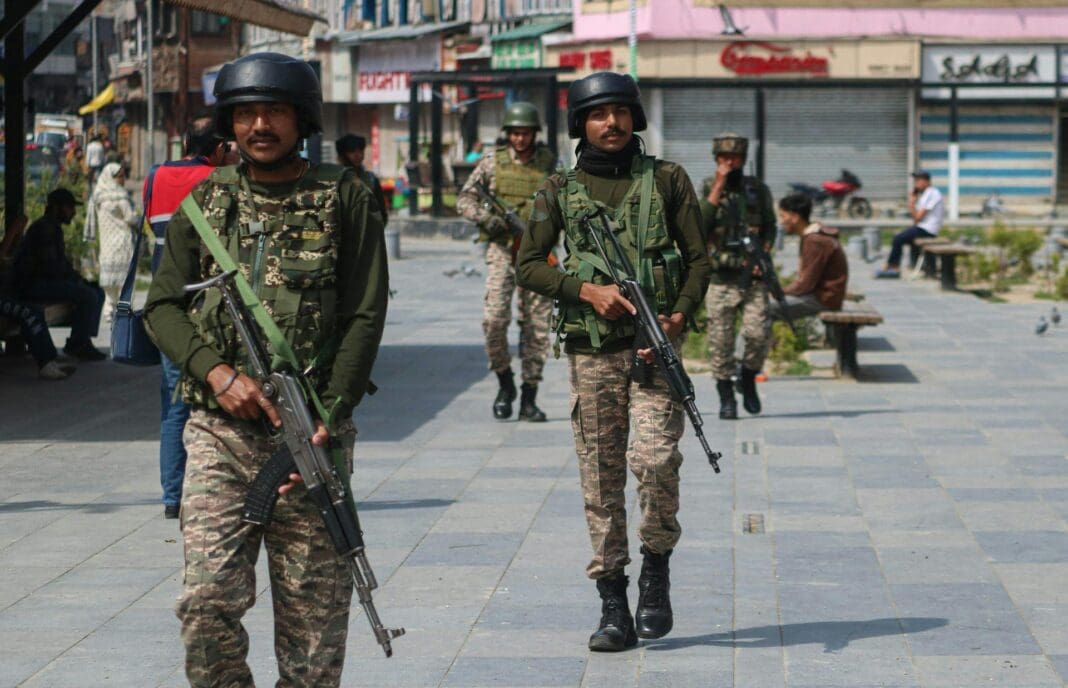Indian airstrikes deep into Pakistan and retaliatory shelling across the border have put the subcontinent on edge once again, with many fearing a further escalation between the two nuclear neighbors.
At least 26 people were killed on May 6, 2025, by missiles launched by India, according to Pakistani authorities. India says it targeted “terrorist infrastructure” sites in the operation in response to an attack on April 22 that saw dozens of tourists in Indian-administered Kashmir killed by gunmen.
Pakistan warned it would respond “at a time, place and manner of its choosing.” Meanwhile, shelling by Pakistan across the “line of control” separating the Indian- and Pakistani-controlled parts of Kashmir killed 15 people, India says.
It represents the most serious fighting between the two countries in decades. But Kashmir has long been a source of tension between India and Pakistan, as articles from The Conversation’s archive explain.

The dispute over Kashmir, which sits on the northern tip of the Indian subcontinent and borders Pakistan to the west, can be traced back to the partition of India in 1947 and the policies of colonial British rule that preceded it.
As Sumit Ganguly, an expert of Indian politics and foreign policy, explains, the British gave the rulers of nominally autonomous princely states the choice of which country they wanted to join post-partition: Muslim-majority Pakistan or Hindu-majority India. This put Maharaja Hari Singh, the monarch of Jammu and Kashmir, in a tricky position – he was a Hindu ruling over a predominantly Muslim population.
“India, which was created as a secular state, wanted to incorporate Kashmir to demonstrate that a predominantly Muslim region could thrive in a Hindu-majority country committed to secularism. Pakistan, on the other hand, sought Kashmir because of its physical proximity and Muslim majority,” writes Ganguly.
While Singh was still deliberating, a rebellion broke out in Kashmir, with newly independent Pakistan giving the insurgents support. India sent troops in on condition that Singh formally accede to India, and the first of four Indian-Pakistan wars began in 1947. It ended with Pakistan gaining control of a third of the disputed region.
“Neither country has wholly reconciled itself to Kashmir’s status. India claims the state in its entirety, as it became a part of its territory legally. Pakistan, however, has historically held the view that Kashmir was ceded to India by a ruler who did not represent its majority Muslim population. Indeed, this dispute between two nuclear-armed powers remains a potential global flashpoint,” Ganguly adds.
Read more:
But to see Kashmir solely through the lens of Indian-Pakistani rivalry would do the complicated conflict a disservice. Often neglected in this reading is the views of many Kashmiris themselves, many of whom would prefer independence.
Chitralekha Zutshi, a professor of history at William & Mary, notes that the desire for autonomy by groups in the region has resulted in numerous independence movements and repeated uprisings.
Pakistan has supported some of these movements, a fact that India has seized upon to “write off unrest in the Kashmir Valley as a byproduct of its territorial dispute with Pakistan,” Zutshi writes. But in so doing, the grievances of “an entire generation of young Kashmiris” who view India as “an occupying power” have been ignored, the scholar continues.
She concludes: “The Kashmir dispute cannot be resolved bilaterally by India and Pakistan alone – even if the two countries were willing to work together to resolve their differences. This is because the conflict has many sides.”
Read more:
Backing up the claim that the views of Kashmiris are often neglected is the fact that the Indus Waters Treaty – a crucial decades-old agreement that allows Pakistan and India to share water use from the region’s rivers – was drawn up largely without the input of Kashmiri people, writes Fazlul Haq, a research scientist at Ohio State University.
Haq, who helps run the university’s Indus Basin Water Project, explains that even before the latest flare-up of violence, a dispute over the treaty was causing tension between India and Pakistan. The problem was that the original treaty, hailed as a success for many years, didn’t take into account the impact of climate change. Melting glaciers have put the long-term sustainability of the treaty at risk, jeopardizing the water supply for more than 300 million people.
“Despite being the primary source of water for the basin, Kashmiris have had no role in negotiations or decision-making under the treaty,” Haq writes. Nor did it provide a mechanism for any regional disputes. “Tensions over hydropower projects in Kashmir were bringing India and Pakistan toward diplomatic deadlock long before the recent attack,” Haq notes.
“The treaty now exists in a state of limbo. While it technically remains in force, India’s formal notice for review has introduced uncertainty, halting key cooperative mechanisms and casting doubt on the treaty’s long-term durability,” Haq writes. Pakistan has said any attempt to disrupt its water supply under the treaty would be considered “an act of war.”
Read more:
There have been four full-scale conflicts between India and Pakistan: in 1947, 1965, 1971 and 1999.
But since the turn of the millennium, cross-border skirmishes in Kashmir have largely been contained, in part due to external pressure from the United States and others who fear the economic and regional consequences of a conflict between the nuclear-armed neighbors.
International relations expert Ian Hall, of Griffith University in Australia, writes that the calculus has changed a little. He notes that there is little economic cost to escalation, with “practically no trade between India and Pakistan.”
The main concern for both sides now is “the political cost they would suffer from not taking military action,” Hall adds.
Read more:
During past crises between Pakistan and India, Washington has played an important role in deescalating tensions.
U.S. President Donald Trump’s recent comments that he believes Pakistan and India will “figure it out one way or the other” suggests this is one occasion in which the U.S. may take a back seat.
But as Syed Ali Zia Jaffery at the University of Lahore and Nicholas John Wheeler at the University of Birmingham in the U.K. note, that creates a problem.
“The absence of a trusted confidential line of communication between the leaders of India and Pakistan is a major barrier to empathetic communication. It prevents the two reaching a proper appreciation of shared vulnerabilities that is so critical to crisis de-escalation,” they write.
Their article uses the example of the Cuban missile crisis of 1962 to tout the importance of what the two scholars describe as “empathetic channels of communication.” U.S. President John F. Kennedy and his Soviet counterpart, Nikita Khrushchev, “exchanged a series of letters in which they acknowledged and expressed their shared vulnerability to nuclear war,” Jaffery and Wheeler write. Establishing mutual empathy and a bond of trust were critical to the peaceful resolution of the crisis.
“Such a hotline between the highest levels of Indian and Pakistani diplomacy would be an important step towards preventing these crises from spinning out of control. More crucially, it could play a pivotal role in managing crises when they do occur, offering a vital channel for reassurance and de-escalation,” Jaffery and Wheeler add.
Read more:













